Growing Sweet Corn in Containers might seem like a far-fetched dream, especially if you’re short on space. But guess what? I’m here to tell you that fresh, juicy sweet corn, grown right on your patio or balcony, is totally achievable! Forget those sprawling fields – we’re bringing the farm to you, one container at a time.
For centuries, corn has been a staple crop, deeply woven into the cultures of the Americas. From ancient civilizations using it as a primary food source to modern-day summer barbecues, corn holds a special place in our hearts (and stomachs!). But access to fresh, homegrown corn isn’t always easy, especially for city dwellers.
That’s where this DIY guide comes in! Imagine biting into a cob of sweet corn you nurtured from a tiny seed. The taste is simply unbeatable. Plus, growing sweet corn in containers is a fantastic way to connect with nature, even in the smallest of spaces. It’s a rewarding hobby, a fun project for the whole family, and a guaranteed conversation starter. I’ll walk you through every step, from choosing the right container and soil to pollination tips and harvesting your golden bounty. Get ready to experience the joy of homegrown sweet corn – it’s easier than you think!
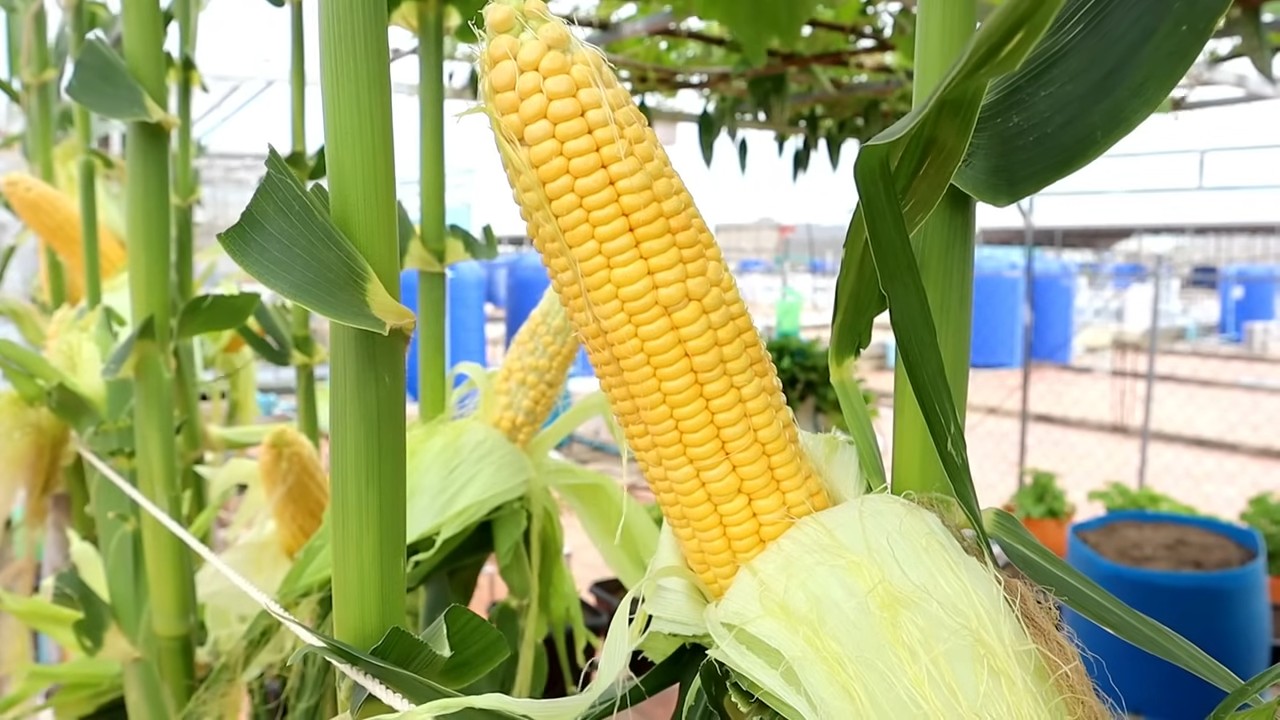
Growing Sweet Corn in Containers: A Bumper Crop on Your Patio!
Hey there, fellow gardening enthusiasts! Ever dreamt of sinking your teeth into a juicy, homegrown ear of sweet corn, but thought you needed acres of farmland to make it happen? Well, I’m here to tell you that you can absolutely grow sweet corn in containers, even if you only have a small balcony or patio! It’s a fun, rewarding project, and I’m going to walk you through every step of the way.
What You’ll Need: The Corn Container Checklist
Before we dive into the nitty-gritty, let’s gather our supplies. This is crucial for a smooth and successful corn-growing adventure.
* Large Containers: This is non-negotiable. Sweet corn needs space for its roots to spread. I recommend containers that are at least 12 inches in diameter and 12 inches deep, but bigger is always better. Think large pots, half whiskey barrels, or even sturdy plastic tubs.
* High-Quality Potting Mix: Don’t skimp on this! Use a well-draining potting mix, not garden soil. Garden soil compacts too much in containers and doesn’t provide adequate drainage. I like to use a mix that includes compost, peat moss, and perlite or vermiculite.
* Sweet Corn Seeds: Choose a variety that’s suitable for container growing. Look for “early maturing” or “short season” varieties. Some good options include ‘Early Sunglow’, ‘Golden Bantam’, or ‘Sugar Baby’.
* Slow-Release Fertilizer: Corn is a heavy feeder, so a slow-release fertilizer will provide a steady supply of nutrients throughout the growing season. Look for a balanced fertilizer with an NPK ratio (nitrogen, phosphorus, potassium) of around 10-10-10 or 14-14-14.
* Watering Can or Hose: Essential for keeping your corn plants hydrated.
* Sunlight: Sweet corn needs at least 6-8 hours of direct sunlight per day. Choose a sunny spot on your patio or balcony.
* Optional:
* Stakes or Trellis: For support, especially if you live in a windy area.
* Bird Netting: To protect your developing ears from hungry birds.
* Companion Plants: Marigolds or basil can help deter pests.
Step-by-Step: Planting Your Sweet Corn
Now for the fun part! Let’s get those seeds in the soil.
1. Prepare Your Containers: Make sure your containers have drainage holes. If not, drill some! Fill the containers with your high-quality potting mix, leaving about an inch or two of space at the top.
2. Sow the Seeds: Plant the sweet corn seeds about 1-2 inches deep and 4-6 inches apart. I usually plant 4-5 seeds per container, then thin them out later if needed. Planting in a grid pattern helps with pollination.
3. Water Thoroughly: Gently water the soil until it’s evenly moist but not soggy.
4. Provide Sunlight: Place your containers in a sunny location that receives at least 6-8 hours of direct sunlight per day.
5. Wait Patiently: Germination usually takes about 7-10 days, depending on the weather and soil temperature. Keep the soil consistently moist during this time.
Nurturing Your Corn: From Seedling to Stalk
Once your corn seedlings emerge, it’s time to provide them with the care they need to thrive.
1. Thinning: Once the seedlings are a few inches tall, thin them out to the strongest 2-3 plants per container. This will give them enough space to grow and prevent overcrowding.
2. Watering: Water your corn plants regularly, especially during hot, dry weather. The soil should be consistently moist, but not waterlogged. I usually water deeply every 2-3 days, or more often if the soil dries out quickly.
3. Fertilizing: Apply a slow-release fertilizer according to the package directions. You can also supplement with a liquid fertilizer every few weeks. Look for a fertilizer that’s high in nitrogen, which is essential for leaf growth.
4. Weeding: Keep the containers free of weeds, which can compete with your corn plants for nutrients and water.
5. Support: As your corn plants grow taller, they may need support, especially if you live in a windy area. You can use stakes or a trellis to help keep them upright.
6. Pest Control: Keep an eye out for pests, such as corn earworms, aphids, and spider mites. If you notice any pests, you can try using insecticidal soap or neem oil to control them. I prefer organic methods whenever possible.
Pollination Power: Ensuring a Bountiful Harvest
Sweet corn is wind-pollinated, which means that the pollen from the tassels (the male flowers at the top of the plant) needs to reach the silks (the female flowers that emerge from the developing ears). In a container setting, pollination can sometimes be a challenge. Here’s how to help:
1. Plant in Blocks: Planting your corn in a block formation (rather than a single row) will increase the chances of successful pollination.
2. Hand Pollination (If Needed): If you notice that the silks are not being pollinated, you can try hand-pollinating them. Gently shake the tassels over the silks to release the pollen. You can also collect pollen from the tassels with a small brush and then brush it onto the silks. Do this in the morning when the pollen is most active.
3. Encourage Wind: Place a fan near your corn plants to simulate wind and help distribute the pollen.
Harvest Time: The Sweetest Reward
After all your hard work, it’s finally time to harvest your sweet corn!
1. Check for Ripeness: The ears are usually ready to harvest about 20-25 days after the silks first appear. The silks will turn brown and dry, and the ear will feel plump and full.
2. Test a Kernel: To be sure, peel back a small portion of the husk and puncture a kernel with your fingernail. If the liquid that comes out is milky, the corn is ready to harvest. If it’s clear, it needs more time.
3. Harvest Carefully: To harvest, grasp the ear firmly and twist it downward until it snaps off the stalk.
4. Enjoy Immediately: Sweet corn is best eaten fresh, so enjoy it as soon as possible after harvesting. You can grill it, boil it, roast it, or even eat it raw!
Troubleshooting: Common Corn Container Challenges
Even with the best planning, you might encounter a few challenges along the way. Here are some common problems and how to address them:
* Poor Germination: If your seeds don’t germinate, make sure the soil is warm enough (at least 60°F) and consistently moist. You can also try soaking the seeds in water for 24 hours before planting.
* Stunted Growth: Stunted growth can be caused by a lack of nutrients, water, or sunlight. Make sure your corn plants are getting enough of all three.
* Yellowing Leaves: Yellowing leaves can be a sign of nutrient deficiency, especially nitrogen. Apply a fertilizer that’s high in nitrogen.
* Poor Pollination: As mentioned earlier, poor pollination can be a challenge in containers. Follow the tips above to improve pollination rates.
* Pests and Diseases: Keep an eye out for pests and diseases, and take action promptly if you notice any problems.
Extra Tips for Corn Container Success
* Succession Planting: Plant new seeds every 2-3 weeks to extend your harvest season.
* Choose the Right Container Size: I can’t stress this enough! Bigger is better when it comes to corn containers.
* Don’t Overwater: While corn needs consistent moisture, overwatering can lead to root rot. Make sure your containers have good drainage.
* Rotate Your Crops: Avoid planting corn in the same container year after year, as this can deplete the soil of nutrients.
* Have Fun! Growing sweet corn in containers is a rewarding experience. Don’t be afraid to experiment and learn along the way.
Growing sweet corn in containers might seem daunting at first, but with a little planning and effort, you can enjoy a delicious harvest of homegrown corn right on your patio. I hope this guide has been helpful, and I wish you all the best in your corn-growing adventures! Happy gardening!
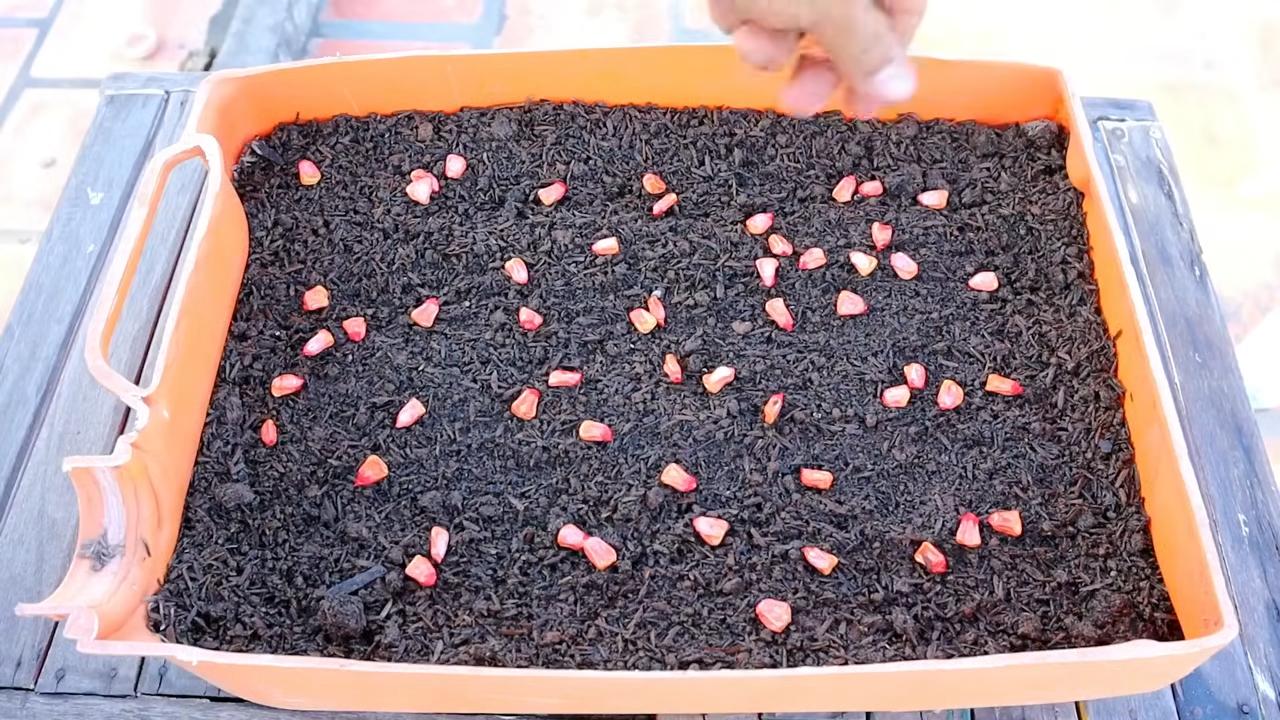
Conclusion
So, there you have it! Growing sweet corn in containers might seem like a daunting task at first, but with the right preparation, a little patience, and these simple steps, you can enjoy the unparalleled taste of homegrown corn, even without a sprawling backyard. This DIY trick is a must-try for several compelling reasons.
First and foremost, it democratizes access to fresh, delicious sweet corn. No longer is this summer staple limited to those with acres of farmland. Apartment dwellers, balcony gardeners, and anyone with a sunny patio can now partake in the joy of harvesting their own ears of corn. Imagine the satisfaction of biting into a juicy, sweet kernel that you nurtured from seed to table!
Secondly, growing your own sweet corn allows you to control the entire process, from seed selection to fertilization. You can choose organic seeds, avoid harmful pesticides, and tailor the growing conditions to your specific climate and preferences. This results in a healthier, more flavorful product than anything you can find at the grocery store. The taste difference is truly remarkable – a burst of sunshine in every bite.
Thirdly, this project is incredibly rewarding. Watching those tiny seeds sprout, grow into towering stalks, and eventually produce plump ears of corn is a testament to the power of nature and your own gardening skills. It’s a fantastic way to connect with the earth, learn about the growing cycle, and appreciate the effort that goes into producing our food. Plus, it’s a great activity to share with children, teaching them valuable lessons about sustainability and healthy eating.
But the benefits don’t stop there! Container gardening offers flexibility and convenience. You can easily move your corn plants to follow the sun, protect them from harsh weather, or simply rearrange your outdoor space. And because you’re growing in a controlled environment, you have more control over pests and diseases.
Now, let’s talk about variations. While the steps outlined above provide a solid foundation, feel free to experiment and adapt them to your own needs and preferences. For example, you could try different varieties of sweet corn, such as ‘Honey Select’ for its exceptional sweetness or ‘Early Sunglow’ for its early maturity. You could also experiment with different types of containers, such as fabric pots or self-watering planters.
Consider companion planting to maximize your yields and deter pests. Marigolds, for instance, are known to repel nematodes, while beans can help fix nitrogen in the soil. Interplanting herbs like basil or oregano can also add flavor and fragrance to your garden.
Don’t be afraid to get creative with your fertilization strategy. In addition to compost and slow-release fertilizer, you can supplement with liquid seaweed or fish emulsion for an extra boost of nutrients. Just be sure to follow the instructions on the product label to avoid over-fertilizing.
Finally, remember that growing sweet corn in containers is a learning process. Don’t be discouraged if you encounter challenges along the way. Every season brings new opportunities to learn and improve. The most important thing is to have fun and enjoy the journey.
We wholeheartedly encourage you to try this DIY trick and experience the joy of growing your own sweet corn. It’s a rewarding, sustainable, and delicious way to connect with nature and enjoy the fruits (or rather, vegetables) of your labor.
Once you’ve harvested your first crop, we’d love to hear about your experience! Share your photos, tips, and challenges in the comments section below. Let’s build a community of container corn growers and learn from each other. Happy gardening!
Frequently Asked Questions (FAQ)
1. What is the best variety of sweet corn to grow in containers?
The best varieties for container growing are typically shorter, more compact types. Look for varieties labeled as “dwarf” or “short-stalked.” Some popular choices include:
* ‘On Deck’: A very early and compact variety.
* ‘Golden Bantam’: A classic heirloom variety that performs well in containers.
* ‘Trinity’: A hybrid known for its disease resistance and good flavor.
* ‘Sugar Baby’: A super sweet variety that matures quickly.
* ‘Honey Select’: While taller, it can be managed with proper support and is known for its exceptional sweetness.
Consider your local climate and growing season when selecting a variety. Check seed catalogs or online resources for recommendations specific to your region.
2. How big of a container do I need for sweet corn?
This is crucial for success. Each corn plant needs at least 12 inches of space in diameter and 12 inches of depth. A good rule of thumb is to use a container that is at least 15-20 gallons in size for 3-4 plants. Larger containers are always better, as they provide more room for root growth and help retain moisture. Half whiskey barrels or large plastic tubs work well. Make sure the container has adequate drainage holes to prevent waterlogging.
3. How much sunlight does sweet corn need?
Sweet corn requires at least 6-8 hours of direct sunlight per day to thrive. Choose a location that receives full sun throughout the growing season. If you live in a particularly hot climate, some afternoon shade may be beneficial to prevent the plants from overheating. If you don’t have a spot that gets enough sun, consider using grow lights.
4. How often should I water my container corn?
Sweet corn is a heavy feeder and drinker, especially when grown in containers. Water deeply and regularly, especially during hot, dry weather. Check the soil moisture daily and water when the top inch feels dry to the touch. Avoid letting the soil dry out completely, as this can stress the plants and reduce yields. Aim for consistent moisture, but avoid overwatering, which can lead to root rot.
5. What kind of fertilizer should I use for sweet corn in containers?
Sweet corn needs a balanced fertilizer with a higher nitrogen content, especially during the early stages of growth. Use a slow-release fertilizer at planting time and supplement with liquid fertilizer every 2-3 weeks. Look for a fertilizer with an NPK ratio of around 10-10-10 or 12-12-12. You can also use organic fertilizers like compost tea or fish emulsion. Avoid over-fertilizing, as this can burn the roots.
6. How do I pollinate sweet corn in containers?
Sweet corn is wind-pollinated, so you’ll need to help the process along when growing in containers. Gently shake the stalks of the plants to release pollen from the tassels (the male flowers at the top of the plant) onto the silks (the female flowers that emerge from the ears). You can also manually transfer pollen from the tassels to the silks using a small paintbrush. Repeat this process every day for about a week, or until the silks turn brown. Planting in blocks rather than rows helps with pollination.
7. How do I know when my sweet corn is ready to harvest?
There are several indicators that your sweet corn is ready to harvest:
* The silks will turn brown and dry.
* The ears will feel plump and full.
* The kernels will be milky when punctured with a fingernail.
* The husks will be tight and green.
Harvest your corn in the early morning for the best flavor. Gently pull down and twist the ear to detach it from the stalk.
8. What are some common pests and diseases that affect sweet corn?
Common pests include corn earworms, aphids, and spider mites. Diseases include corn smut and rust. Inspect your plants regularly for signs of pests or diseases and take action promptly. Use organic pest control methods like insecticidal soap or neem oil. Ensure good air circulation to prevent fungal diseases.
9. Can I grow sweet corn in containers indoors?
While it’s possible to grow sweet corn indoors, it’s challenging. You’ll need very strong grow lights to provide the plants with enough energy to produce ears of corn. You’ll also need to manually pollinate the plants. It’s generally easier and more rewarding to grow sweet corn outdoors in containers.
10. How many ears of corn can I expect to get from each plant?
Typically, you can expect to get one to two ears of corn per plant when growing in containers. The yield will depend on the variety, growing conditions, and your gardening skills. With proper care and attention, you can maximize your yields and enjoy a bountiful harvest of homegrown sweet corn.

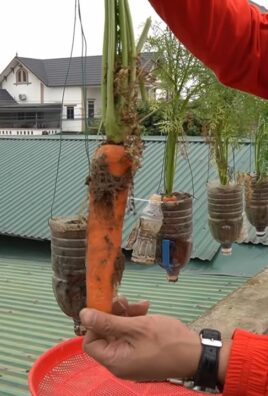
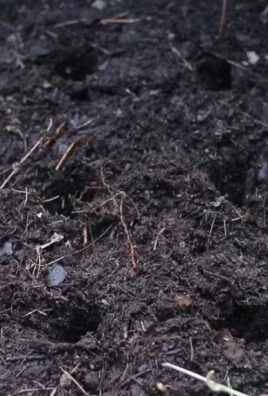
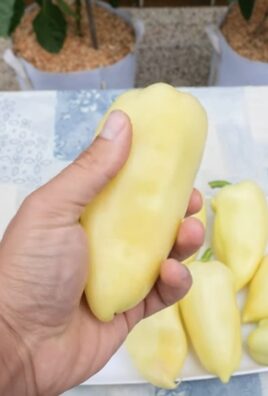
Leave a Comment